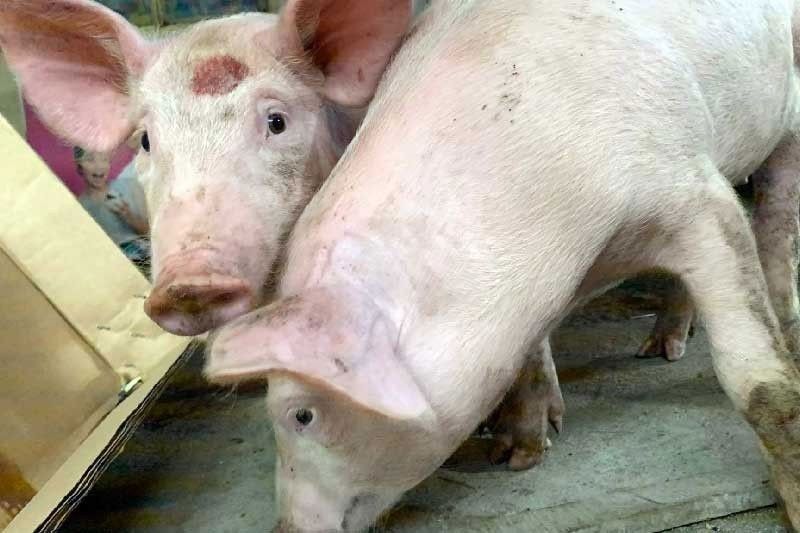DA providing P27 billion loans to assist hog raisers

MANILA, Philippines — The government is allocating P27 billion in loans to commercial hog raisers in a bid to restart the hog industry, which has been crippled by African swine fever (ASF).
“This can be used by our commercial hog raisers to restart the whole hog industry,” Agriculture Secretary William Dar said at a briefing yesterday.
Of the amount, P15 billion will come from the Land Bank of the Philippines and the remaining P12 billion from the Development Bank of the Philippines.
Commercial hog raisers take up about 35 percent of the total swine population, with the bulk of 65 percent still with backyard raisers.
However, the ASF has not spared commercial raisers from the damage as even some institutional brands decided to move away from the hog industry.
The latest victim is the Monterey Meats brand of diversified conglomerate San Miguel Corp., which decided to make adjustments in its meat business operations.
Apart from the P27 billion, the DA also allotted P600 million for repopulation of backyard raisers, including breeders and multiplier farms.
The DA is also extending zero-interest loans as operating capital to market vendors’ associations in Metro Manila public markets following the implementation of the price cap.
On the first day of implementation, several vendors opted to not sell their products amid fears of losing more money and receiving sanctions at the same time.
Under the loan program, market vendors’ associations may avail of up to P5 million as working capital at zero-interest and payable in three to five years.
“This will enable them to buy pork carcasses directly from hog raisers and major agricultural commodities from farmers’ cooperatives and associations (FCA), and sell these at reasonable prices to consumers in Metro Manila,” Dar said.
“We are initiating this market vendors’ financing program to institutionalize mutual partnership between them and FCAs, and create a win-win situation benefiting producers, retailers and consumers,” he said.
The DA-Agribusiness and Marketing Assistance Service will help market vendors forge a marketing agreement with the FCAs.
Its Agricultural Credit Policy Council, through its partner-lending conduits that have branches in Metro Manila, will provide the loans to organized groups of market vendors.
The respective city and municipal local government units in Metro Manila should identify, vet and endorse the vendor groups that can participate in the financing program.
Import at lower tariff
In an interview with One News’ “The Chiefs”on Monday night, Dar also revealed they are pushing for higher pork imports at lower tariff to 400,000 metric tons in anticipation of a shortfall in pork supply.
“We have a potential shortfall of almost 450,000 MT for the year and that’s what we will have to bring in,” he said.
Projected pork supply for 2021 is at 1.22 million MT while demand is at 1.6 million, or a 400,000 MT deficit.
Last month, the DA proposed to hike the MAV to 162,000 MT, which President Duterte approved in principle.
Imports under MAV are only levied with a 30 percent tariff while those out-quota imports are slapped with a 40 percent tariff.
However, the DA is also pushing for a tariff cut for imports under both in-quota and out-quota to as low as five percent and 15 percent, respectively.
At yesterday’s hearing, Dar clarified that the MAV Advisory Council of the DA has endorsed a deficit of more or less 400,000 MT to be included in the MAV Plus scheme.
“We really have a deficit for the year that’s why supply augmentation is needed. With the MAV Plus, traders are not the only ones who can import, but also our hog raisers who may want to bring in supply,” Dar said.
Cap on imported pork
The Department of Trade and Industry (DTI), meanwhile, said it is already looking at putting a price cap on imported pork.
“We are working out the imposition of a price cap for imported pork which normally goes to the supermarkets. These will be much lower than the current price ceiling,” Trade chief Ramon Lopez said.
During yesterday’s market monitoring, Lopez and Dar saw pork at a supermarket in Mandaluyong being sold at P265 to P295 per kilo, which is slightly below the price cap of P270 to P300 a kilo imposed by the government.
The government is also imposing a price cap on the wholesale level at P235 per kilo to ensure that vendors can comply with the mandated ceiling.
He said in a Viber message to reporters following the briefing, the SRP would be finalized within the week.
“We are studying well the computation. (We will have) unbiased assessment,” he said. Price caps for pork and chicken in Metro Manila under Executive Order 124 took effect last Monday and would be in place for 60 days.
Under the EO, the price cap is at P270 per kilo of kasim, P300 per kilo of liempo and P160 per kilo of chicken.
He also said the agencies would step up efforts to monitor and verify reports of manipulation of supply and price.
He said the DA, DTI, National Bureau of Investigation, Criminal Investigation and Detection Group of the Philippine National Police and National Security Council are working together to verify reports of such practices.
“We can see the problem in the situation now is the lack of supply and we can see efforts of DA to balance and add supply both locally and through importation. Once supply is there, for sure, we will see it back to where it was, similar to what happened to rice before,” he said.
ASF
Meanwhile, the spread of ASF in the country continues to take its toll as local production of hogs remained on a decline during the last quarter of 2020.
Based on data from the Philippine Statistics Authority released yesterday, hog production in the October to December 2020 period decreased 13.8 percent to 515,050 MT from 597,510 MT in the previous year.
As of January, the total swine inventory of the country was estimated at 9.72 million heads, down 24 percent from the 12.8 million heads.
During the period, 11 regions reported decreases in production, with Central Luzon reporting the highest decline at 49.1 percent to just 49,460 MT.
Inventory in backyard farms contracted by 13.3 percent while in commercial farms, the figure dipped 42 percent.
Of the total swine inventory, 71 percent were raised in backyard farms while the remaining 29 percent were from commercial farms.
Among the regions, Calabarzon recorded the highest in terms of production, followed by Northern Mindanao and Central Visayas. The three regions contributed 38 percent to the country’s total hog production.
Average farmgate price of live hogs for slaughter went up by 22 percent or from P98.82 per kilo in 2019 to P120.14 per kilo last quarter. – Louella Desiderio
- Latest
- Trending






























